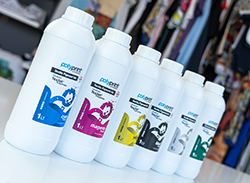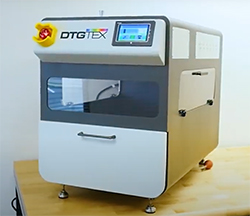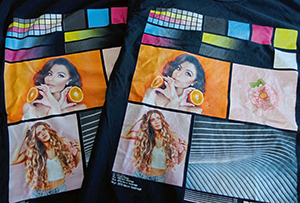Direct to Garment (DTG) printing has revolutionized the world of custom, on-demand apparel, offering intricate designs and vibrant colors on a wide range of fabrics. Quality control plays a pivotal role in ensuring the final product meets high standards.
Every decorator wants to achieve the most vibrant and durable prints possible so let’s delve into the key aspects of DTG quality control, covering fabric types, inks, equipment, curing, and the crucial wash test.
Fabric Types
The DTG Printing process is compatible with various types of fabrics including cotton, blends, and some synthetics. Understanding the fabric is essential for achieving optimal print results. Cotton, for instance, absorbs ink well, resulting in vibrant and colorful prints. Blends can offer a balance of comfort and print quality. It’s crucial to test different fabrics to determine compatibility with your specific printer and inks.
Inks
 DTG inks are water-based and designed to penetrate fabric fibers for a durable and vivid print. The two primary types are pigment and dye-based inks.
DTG inks are water-based and designed to penetrate fabric fibers for a durable and vivid print. The two primary types are pigment and dye-based inks.
Pigment inks are known for their longevity and colorfastness, making them suitable for diverse fabric types. Pigment ink is lighter in color than dye-based and are more water resistant while producing a truer solid black.
Dye-based inks, while vibrant, might be more suitable for specific fabrics and applications, as it is not waterproof and can fade when exposed to sunlight or humid conditions.
Equipment
 Quality control starts with the health of your equipment. Regular maintenance and calibration are essential to prevent issues like color inconsistency and misalignment. Periodic checks of print heads, ink levels, and other components such as dampers, ink wipers, and filters help maintain optimal performance.
Quality control starts with the health of your equipment. Regular maintenance and calibration are essential to prevent issues like color inconsistency and misalignment. Periodic checks of print heads, ink levels, and other components such as dampers, ink wipers, and filters help maintain optimal performance.
If you use a pretreating machine, you will also want to clean the pretreat lines regularly to prevent build-up and clogging. Training your operators on proper equipment usage and maintenance can significantly impact the quality of prints you are producing and can save money on technician visits.
Curing
After printing, curing is a critical step to set the ink into the fabric, ensuring durability and wash resistance. Incomplete curing can lead to faded prints or ink bleeding during washing.
Quality control measures include monitoring curing temperature and time. Using a heat press or conveyor dryer that can apply even heating across the print and can maintain a specific temperature according to the guidelines set by your ink manufacturer is crucial. Regularly calibrating your equipment using a donut probe for dryers or heat test strips for heat presses guarantees consistent results across different batches.
Wash Test
Performing a wash test is the litmus test for DTG print durability. It involves washing a printed garment multiple times under standardized conditions to simulate wear and tear.
 Quality control in this phase includes assessing colorfastness, image sharpness, and overall print integrity after each wash cycle. A successful wash test ensures that the printed garment can withstand regular laundering without compromising quality.
Quality control in this phase includes assessing colorfastness, image sharpness, and overall print integrity after each wash cycle. A successful wash test ensures that the printed garment can withstand regular laundering without compromising quality.
To Conduct a Wash Test
- Prepare the Test Samples: Print multiple identical designs on test fabric samples.
- Washing Procedure: Follow a standardized washing procedure, including detergent and wash temperature. Use a washing machine for consistency.
- Assess Colorfastness: Check for color bleeding or fading after each wash. High-quality prints should maintain vibrancy through multiple wash cycles.
- Inspect Image Sharpness: Examine the image for any deterioration in sharpness or detail. This ensures that the ink adheres well to the fabric.
- Record Results: Keep detailed records of the wash test results, including the number of wash cycles and any observed changes.
- Adjustments and Retesting: If issues arise during the wash test, consider making adjustments to your curing parameters, pretreatment, or other variables. Retest to validate improvements.
DTG printing quality control is a comprehensive process involving consideration from fabric selection to the final wash test. By understanding each stage of the printing process, decorators can consistently produce high quality, durable, and visually striking prints. Regular monitoring, maintenance and testing are the pillars of successful quality control in the dynamic world of Direct to Garment Printing.
